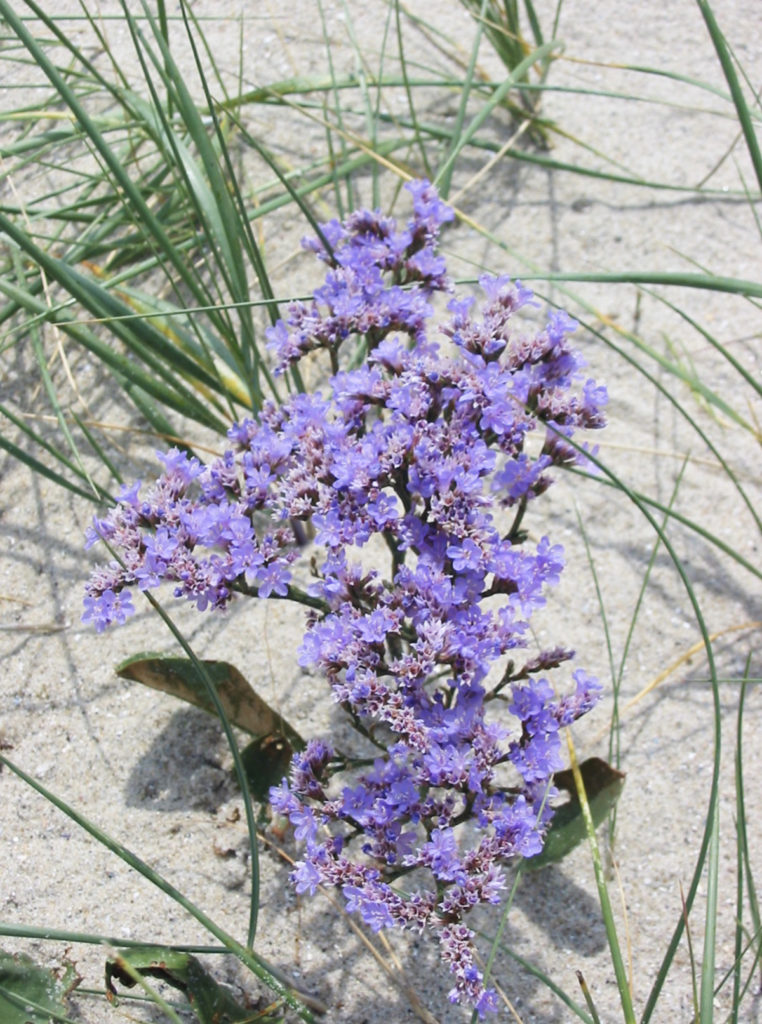
Most are familiar with the soothing aroma of lavender, which thrives in arid climates and has numerous health benefits. For those kayaking through Island marshes this time of year, you might notice a similarly named but different delicate flower rising above the grasses: sea lavender.
Sea lavender’s small purple flowers are similar to the familiar fragment herb. However, the genus name of sea lavender, Limonium, is from the Greek word for “meadow,” and refers to the frequent occurrence of some species in salt meadows.
As the name implies, they are tolerant to salty areas, often located in low salt marsh areas, irregularly flooded salt marshes, and occasionally on coastal and sand dunes.
Sea lavender is a pretty perennial with petite pale purple flowers. The spoon shaped leaves of this lavender grow in a circular pattern at the base of its stem. Typically growing from 12- to 30-inches high, they thrive in full sun and well-drained soil. Also referred to as marsh rosemary, sea lavender blooms from July to August and turns brown in fall and winter.
Sea lavender has health and ecological benefits. Butterflies looking for nectar will often flock to sea lavenders, while they also attract bees, flies, hummingbirds and spiders. For humans, its roots are known for being decongestants and depurative.
Often over-collected for its beauty, sea lavender is protected on town, state, federal and conservation lands. However, with coastal development and projected sea level rise due to climate change, these seaside flowers may be completely wiped out.
In order to save sea lavender, as well as multitudes of other species, it is crucial that we do our best to mitigate the impacts of our warming climate.

September 05, 2020 at 11:18PM
https://ift.tt/2QYh7TP
Mashomack Musings: Lovely lavender of the sea - Shelter Island Reporter - Shelter Island Reporter
https://ift.tt/2CoSmg4
Sea
/cloudfront-us-east-2.images.arcpublishing.com/reuters/CZF6NULMVVMEXHOP7JK5BSPQUM.jpg)
No comments:
Post a Comment